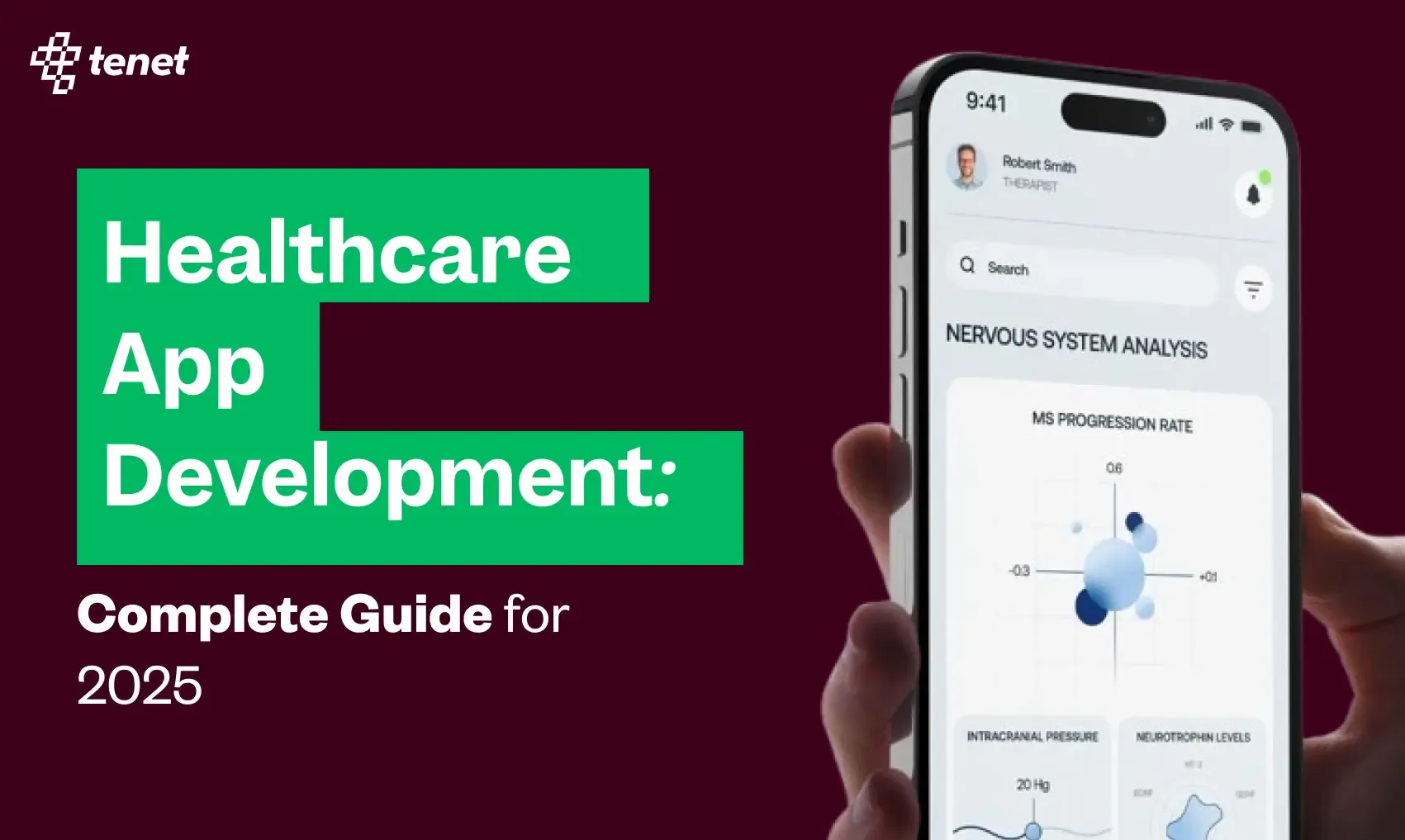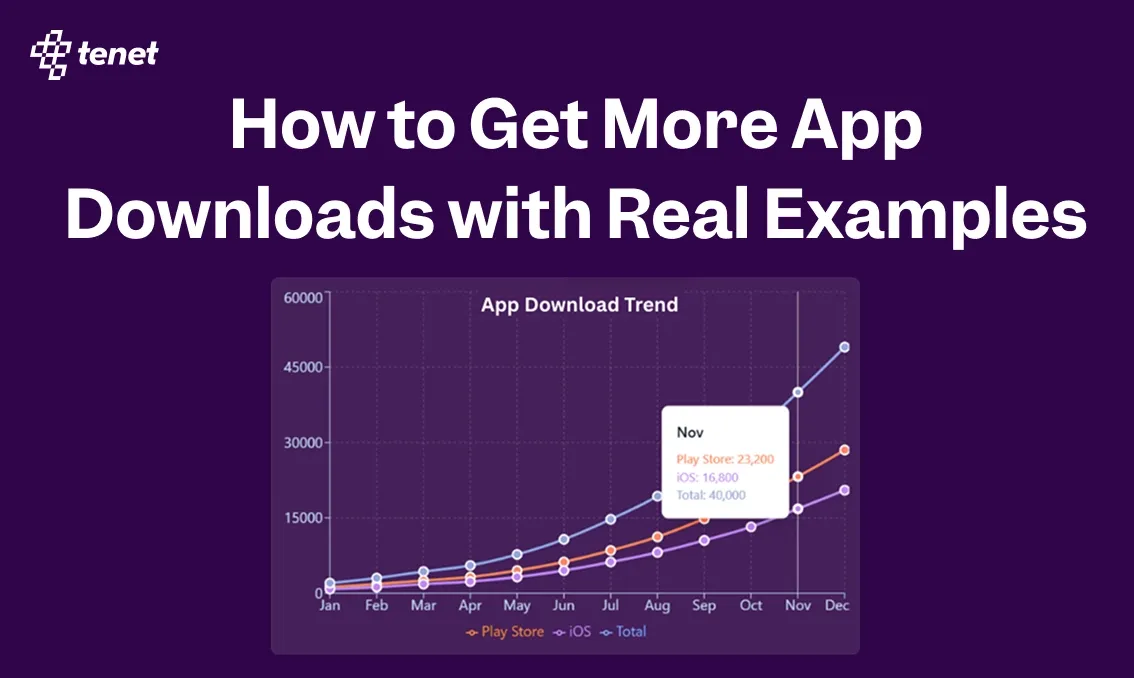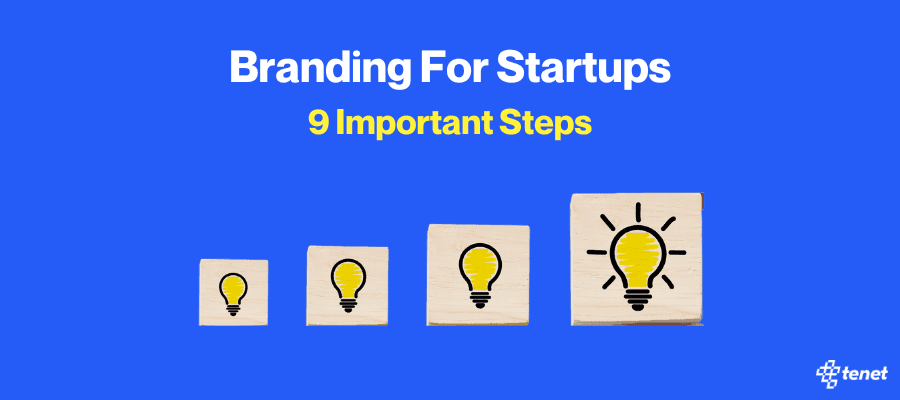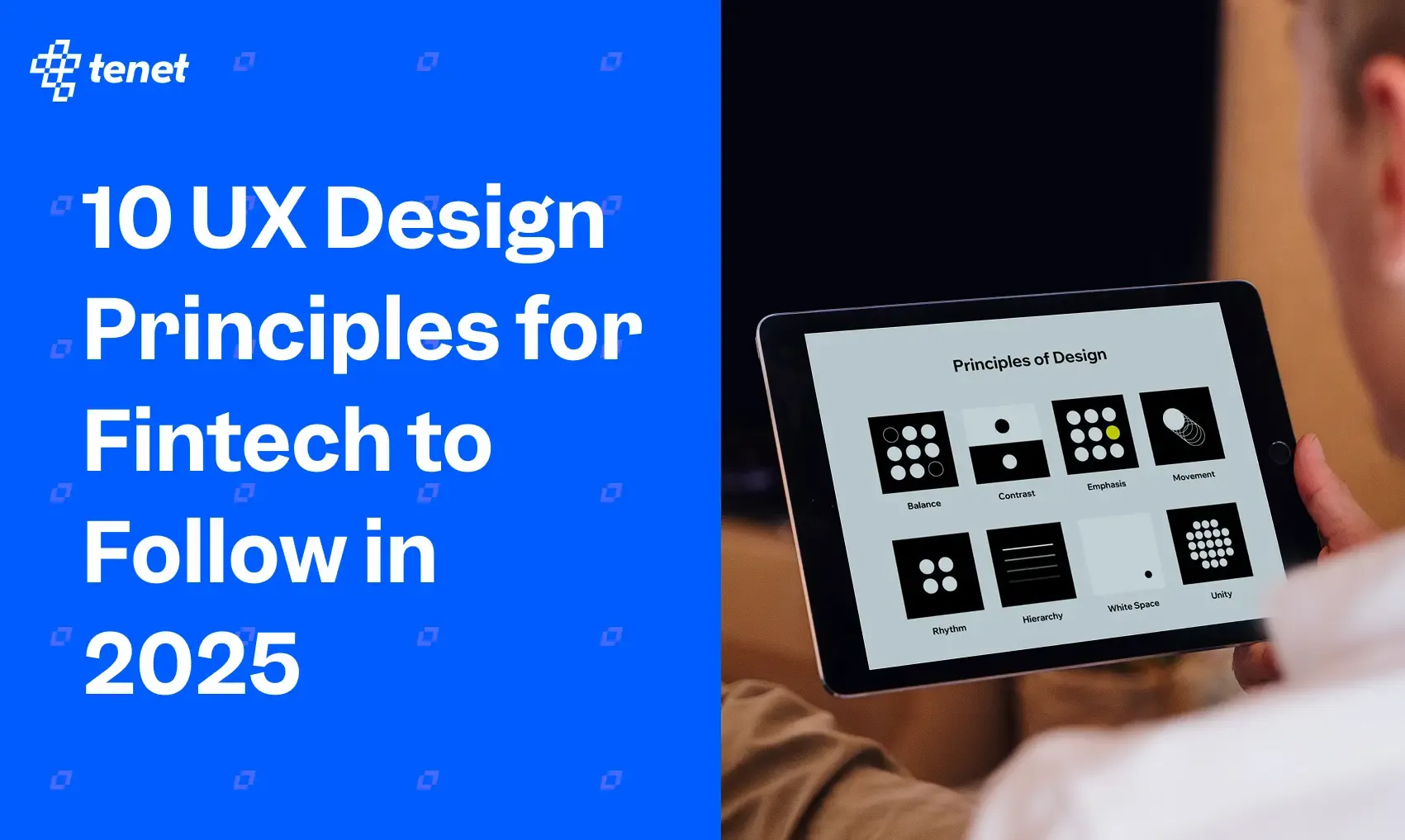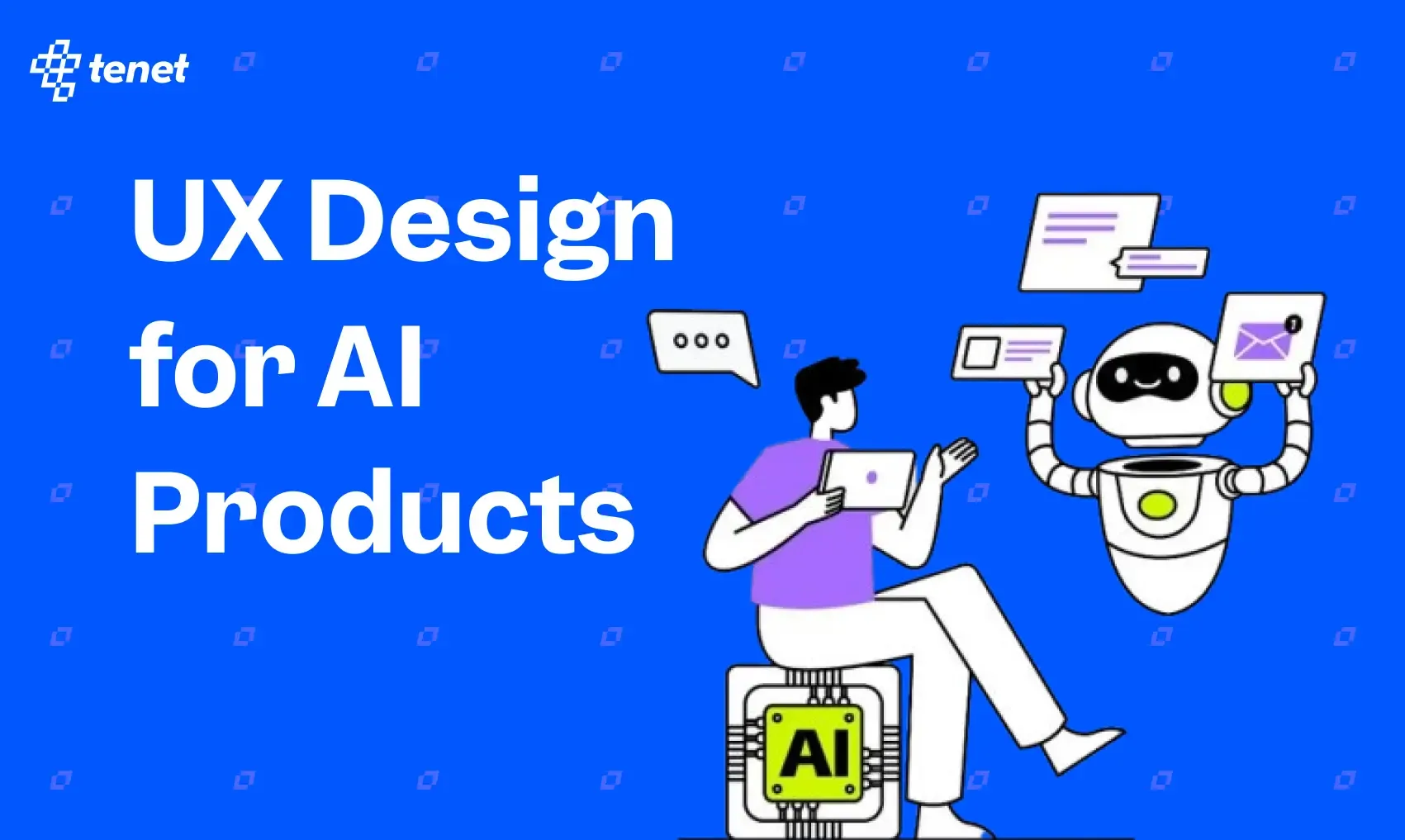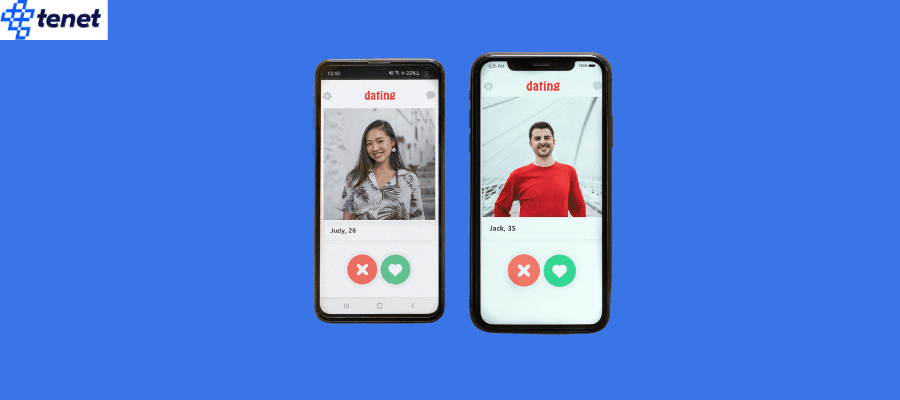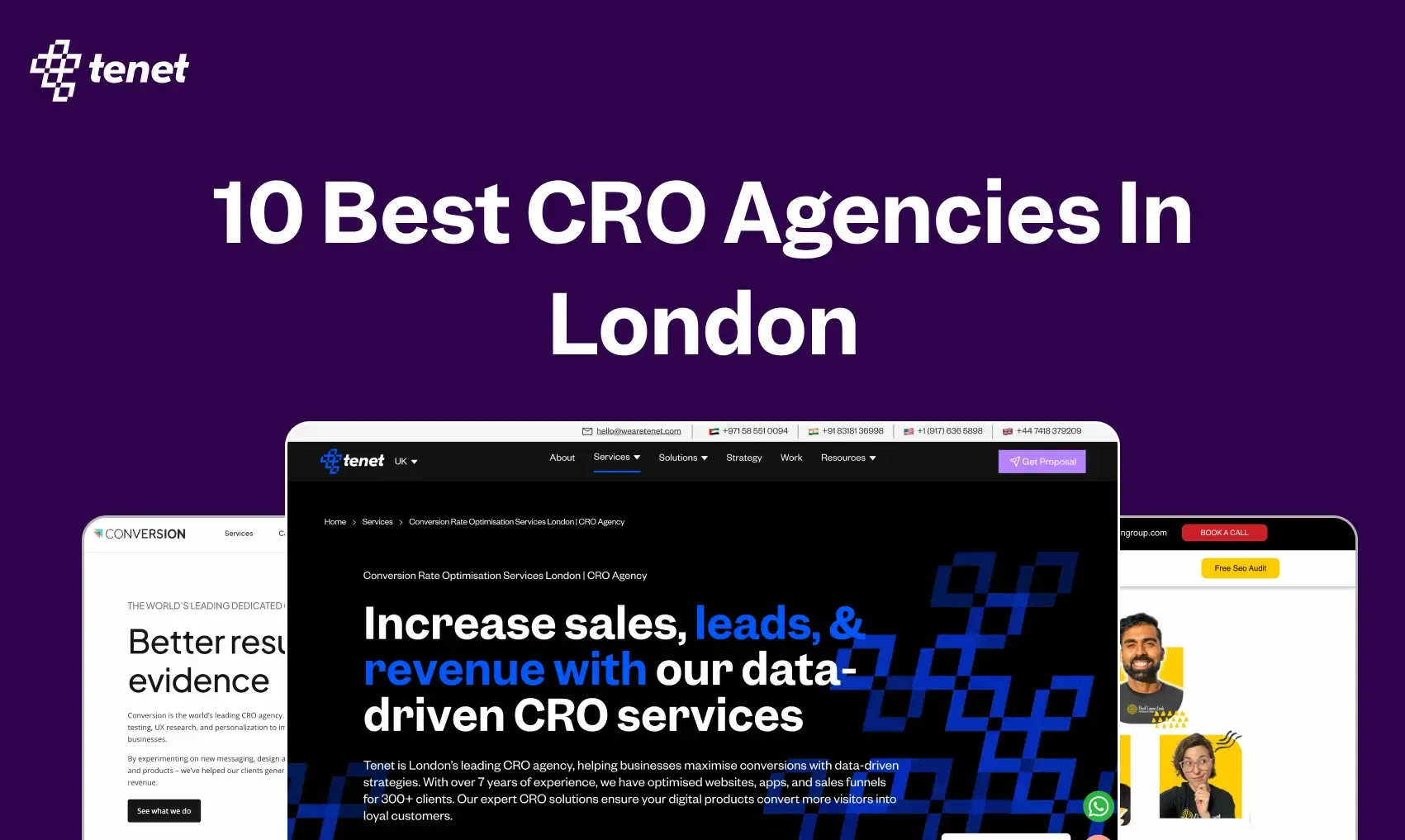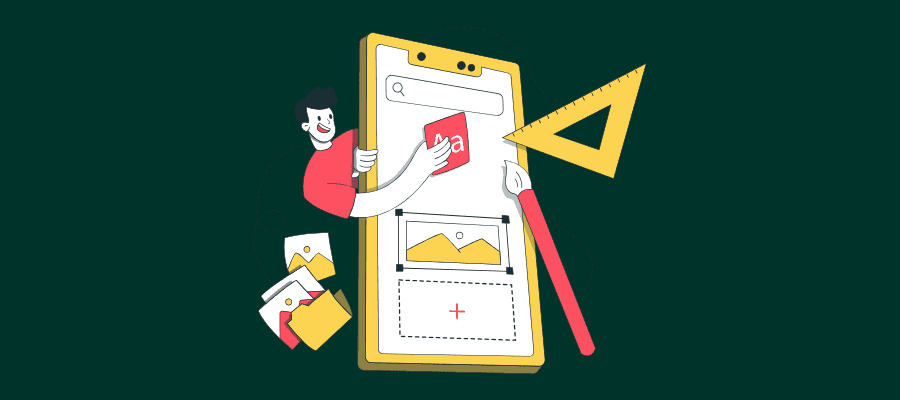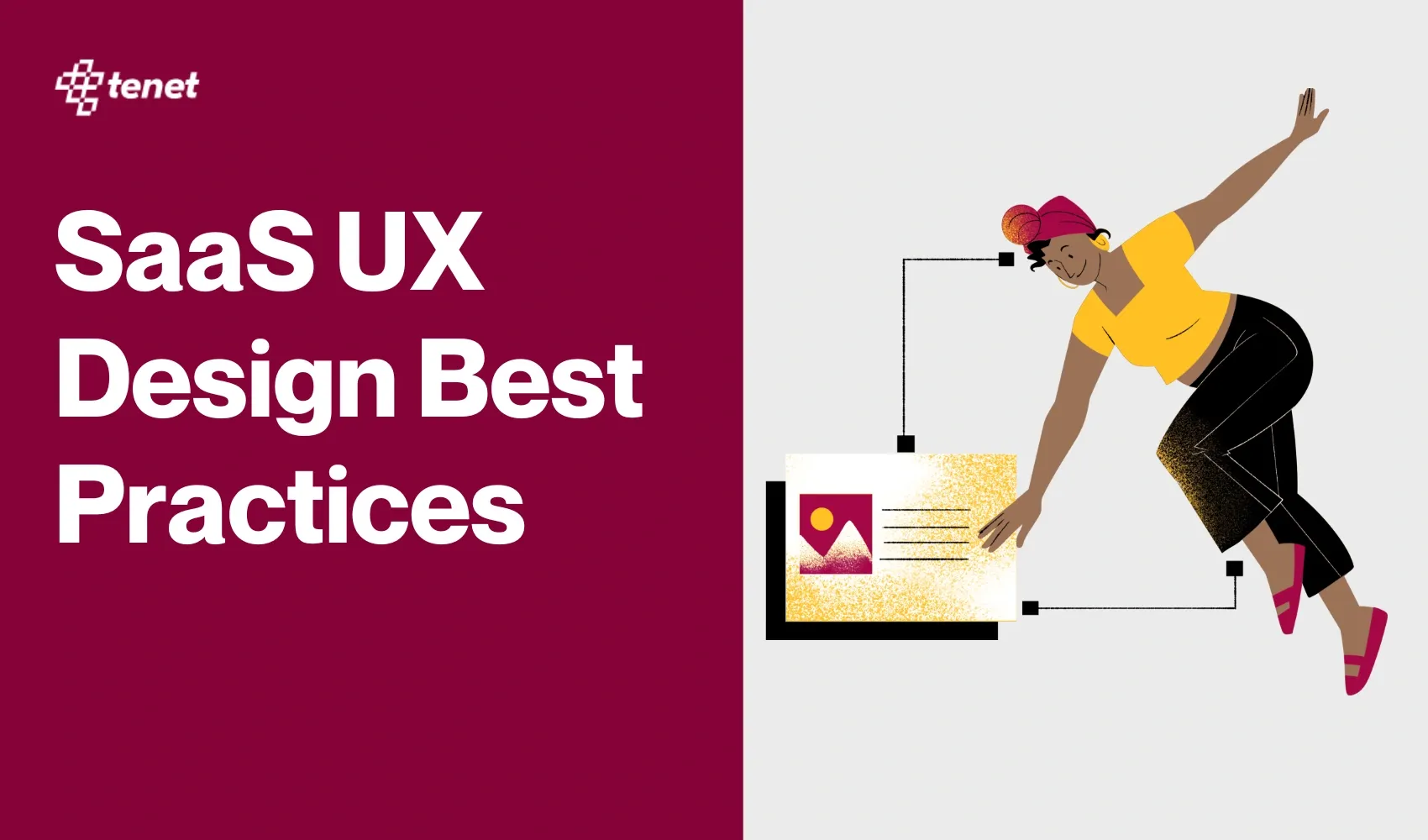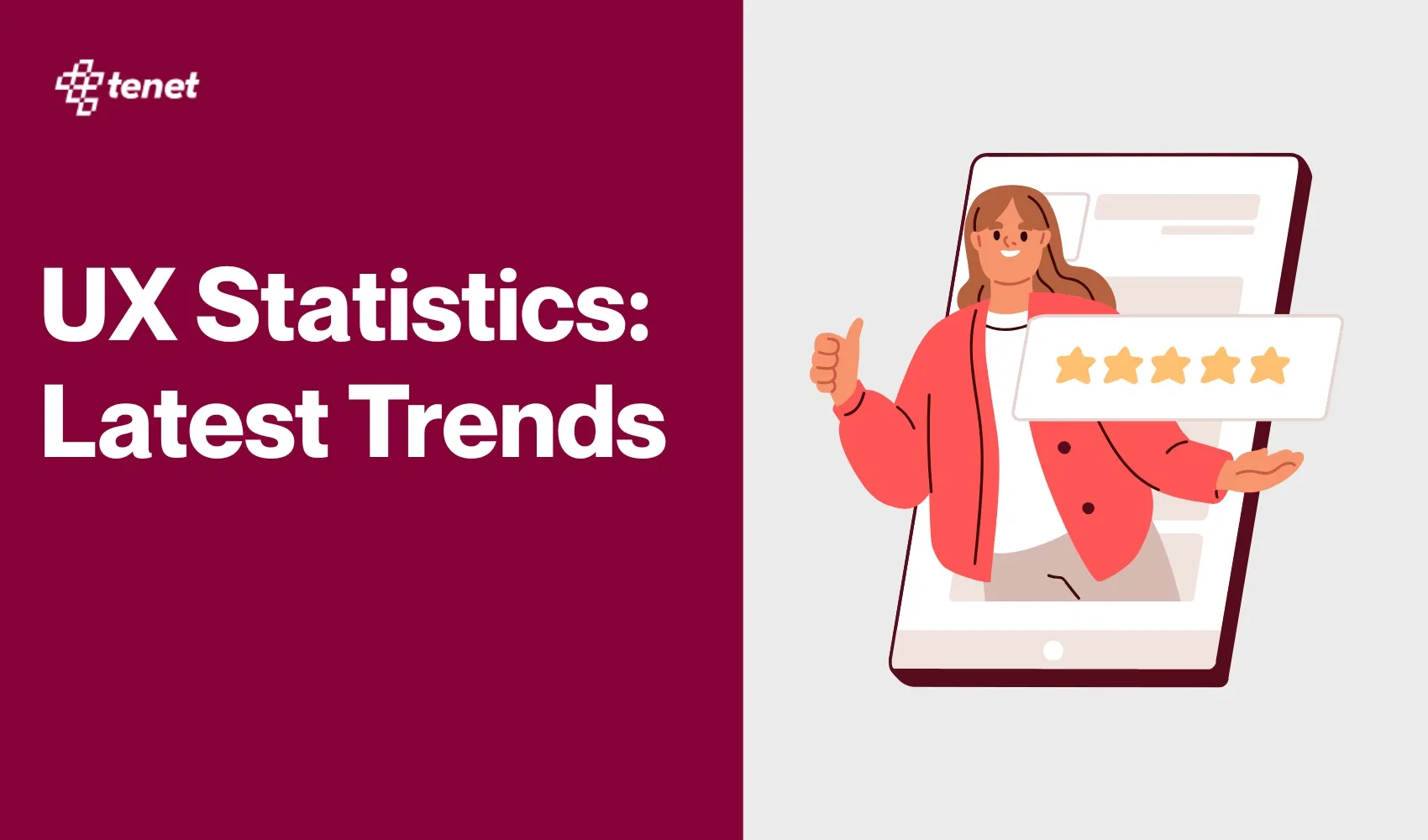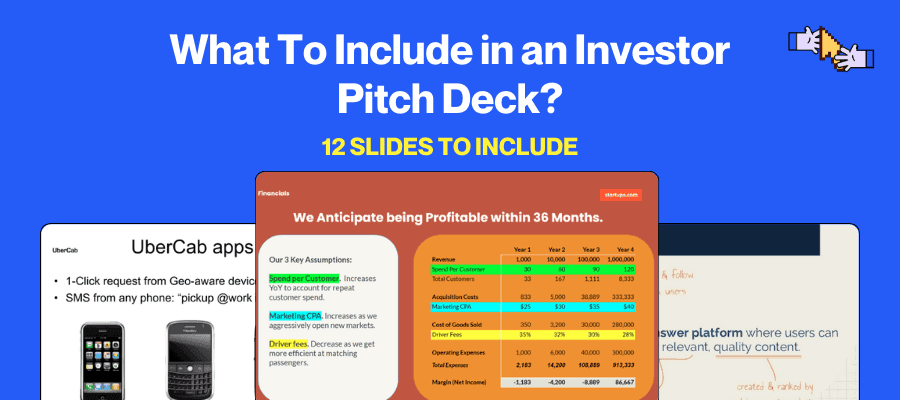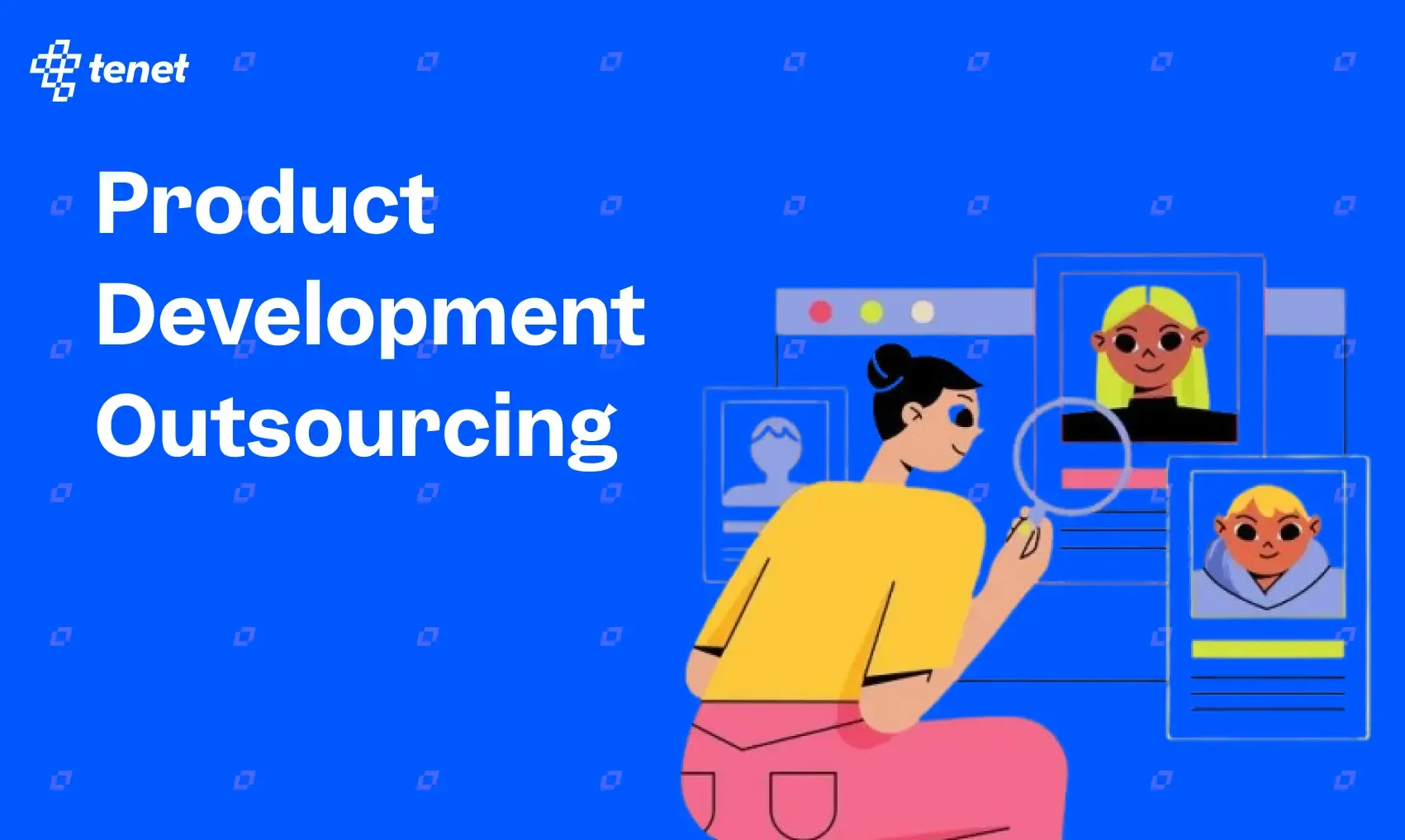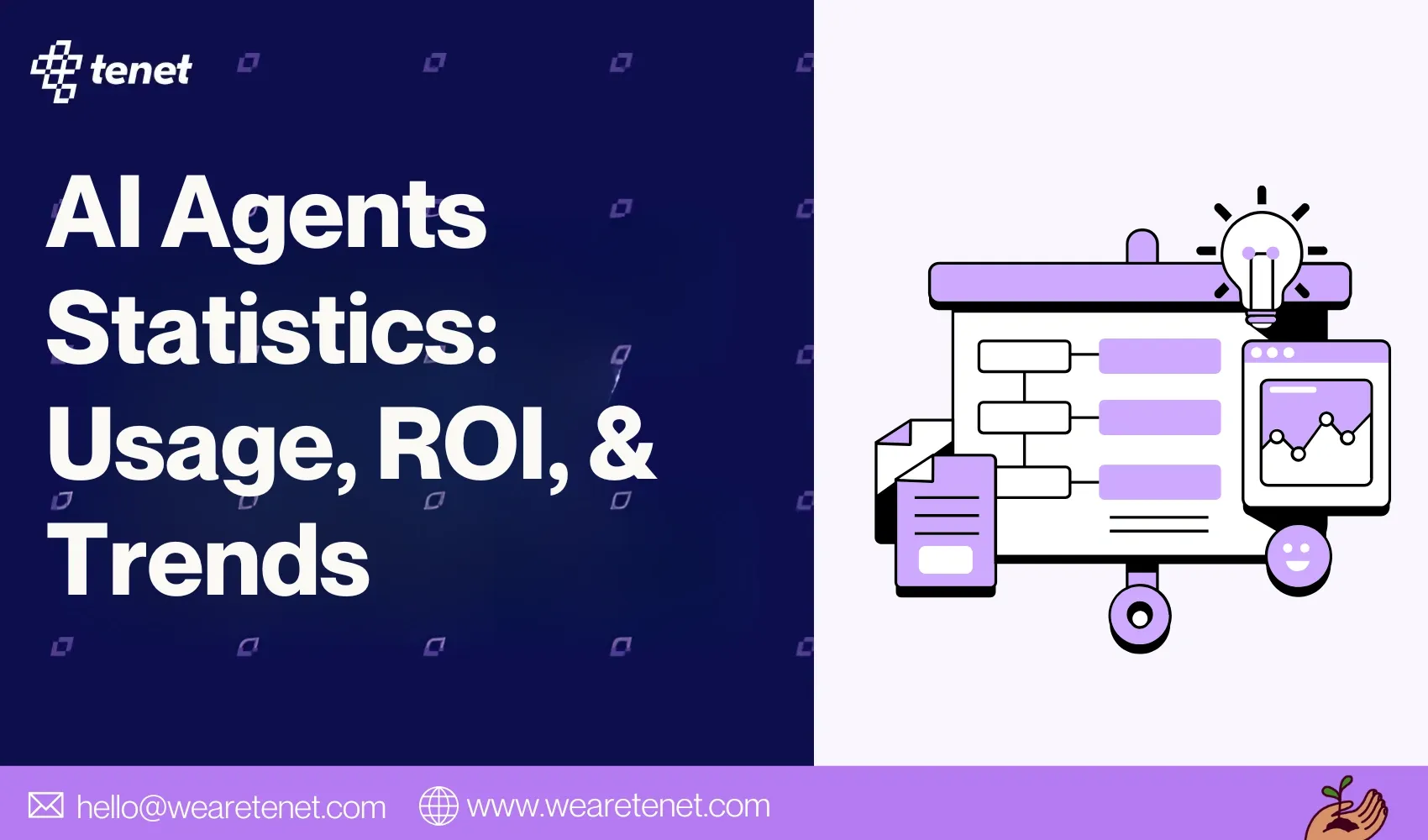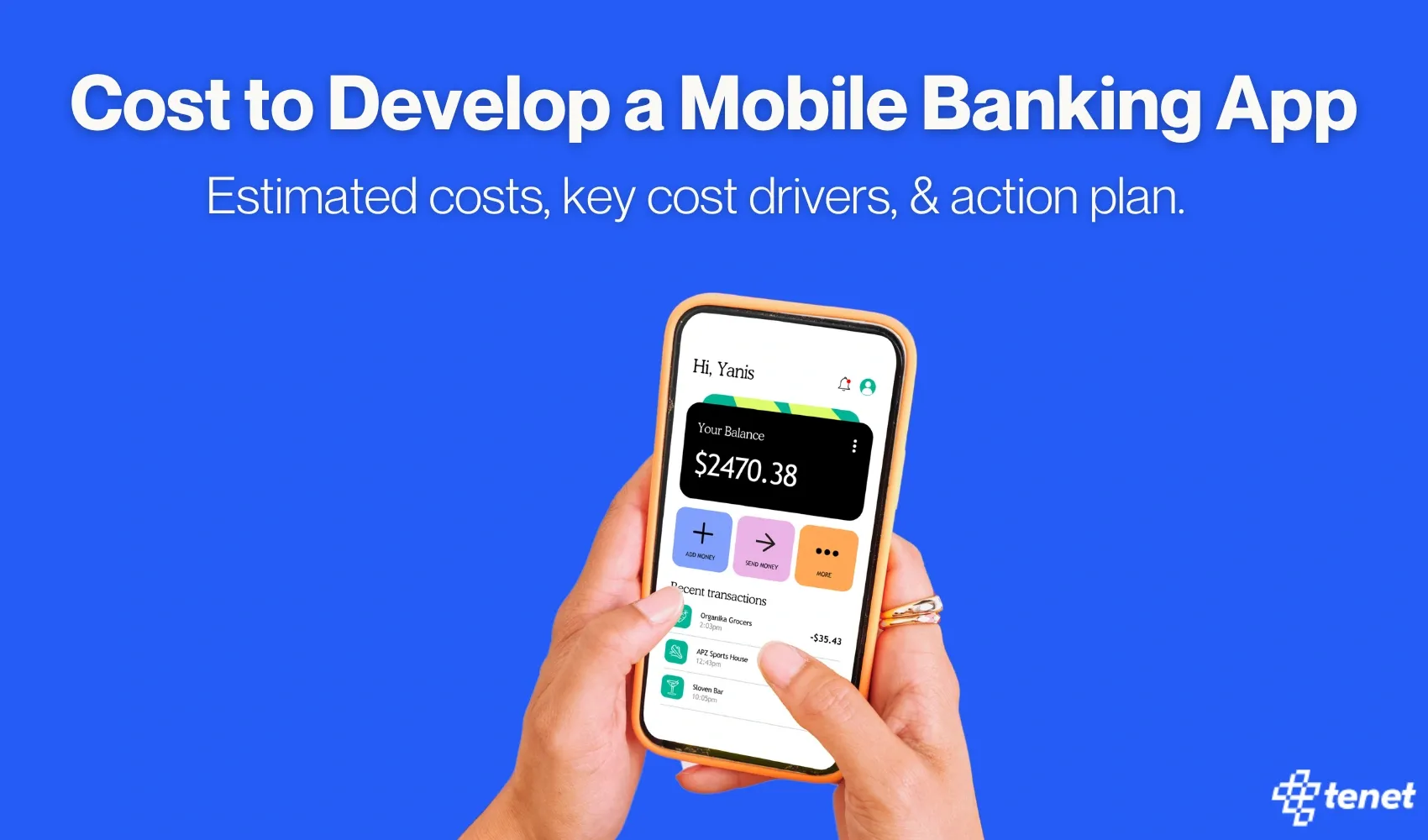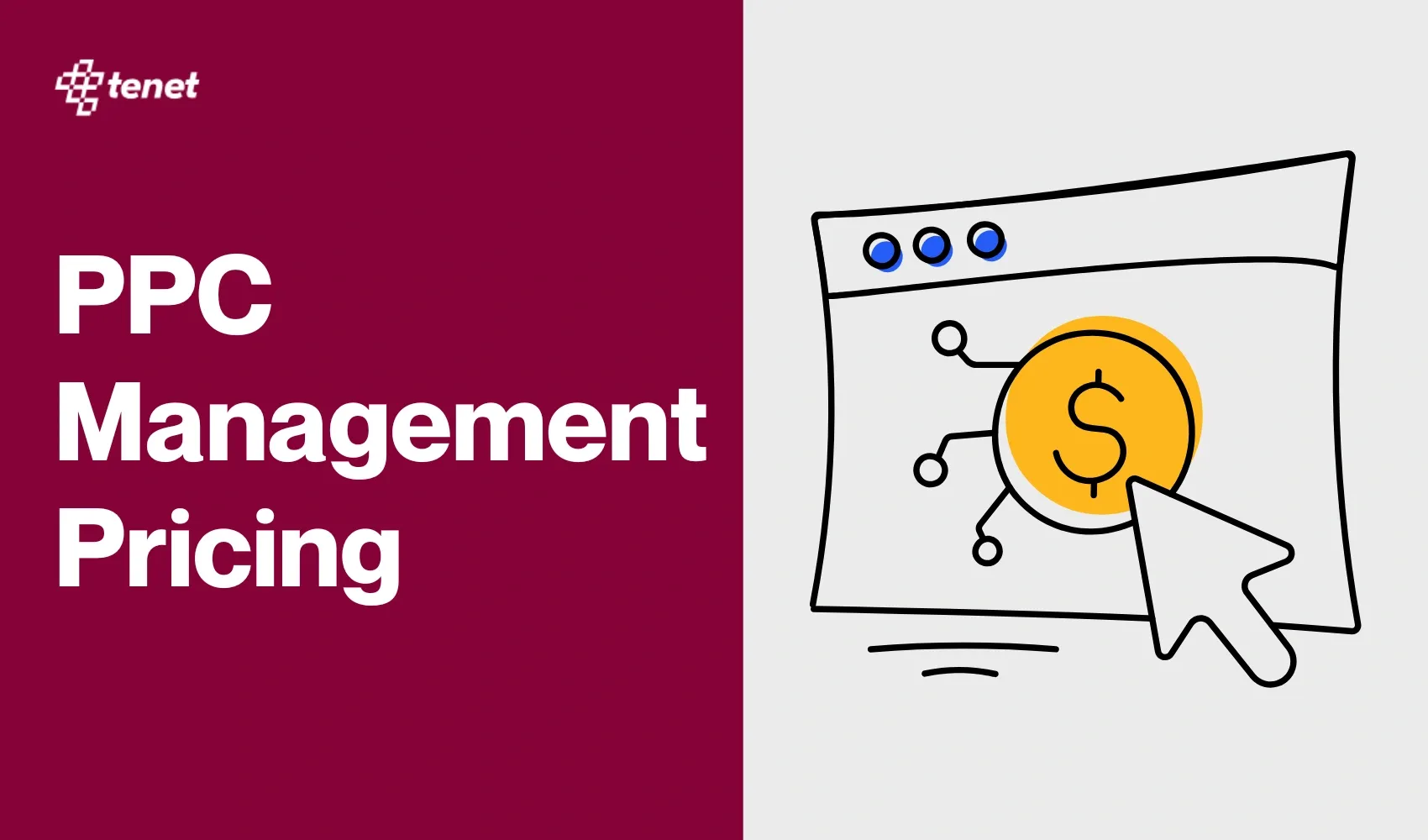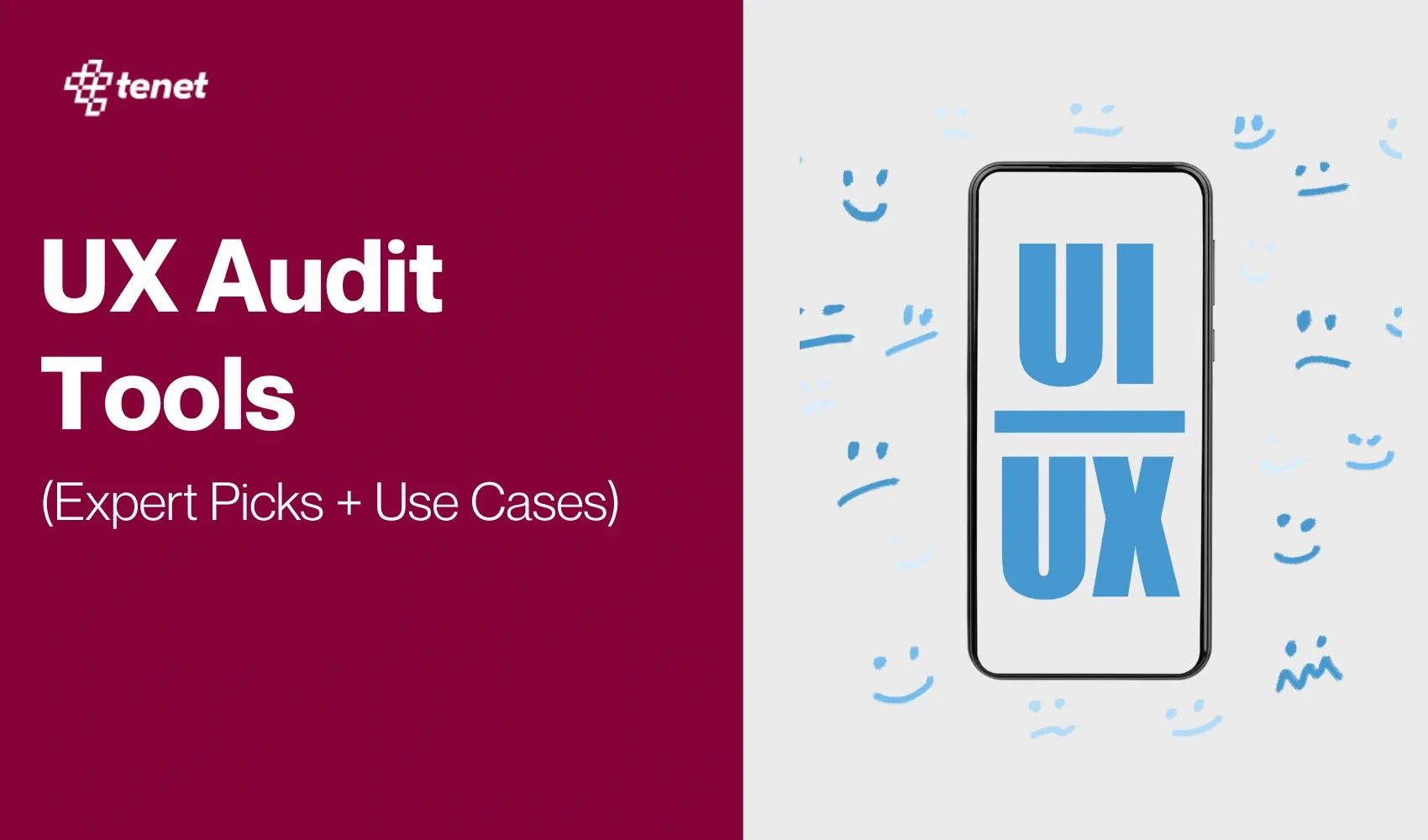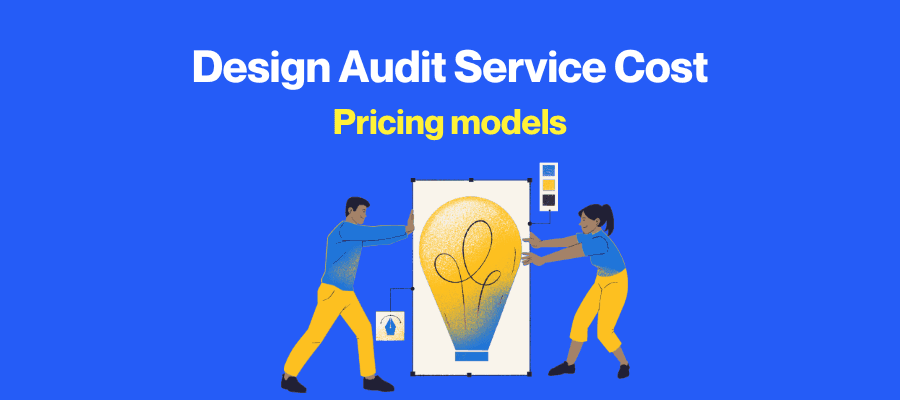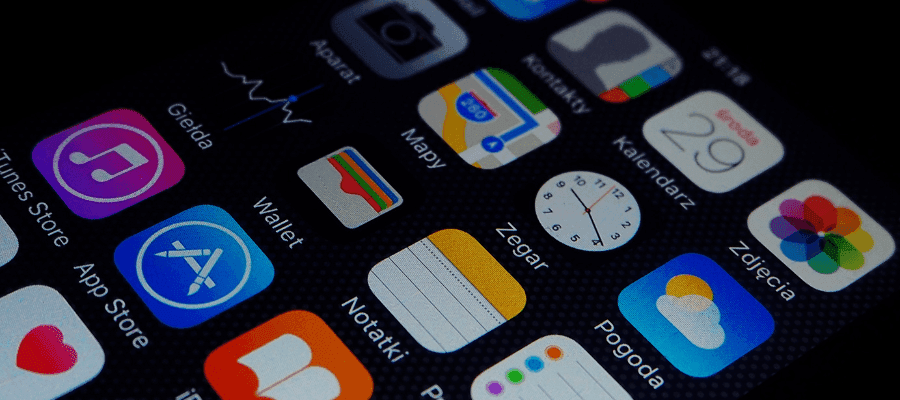Healthcare App Development Cost is $30K to $300K (in 2025)
Share
Share
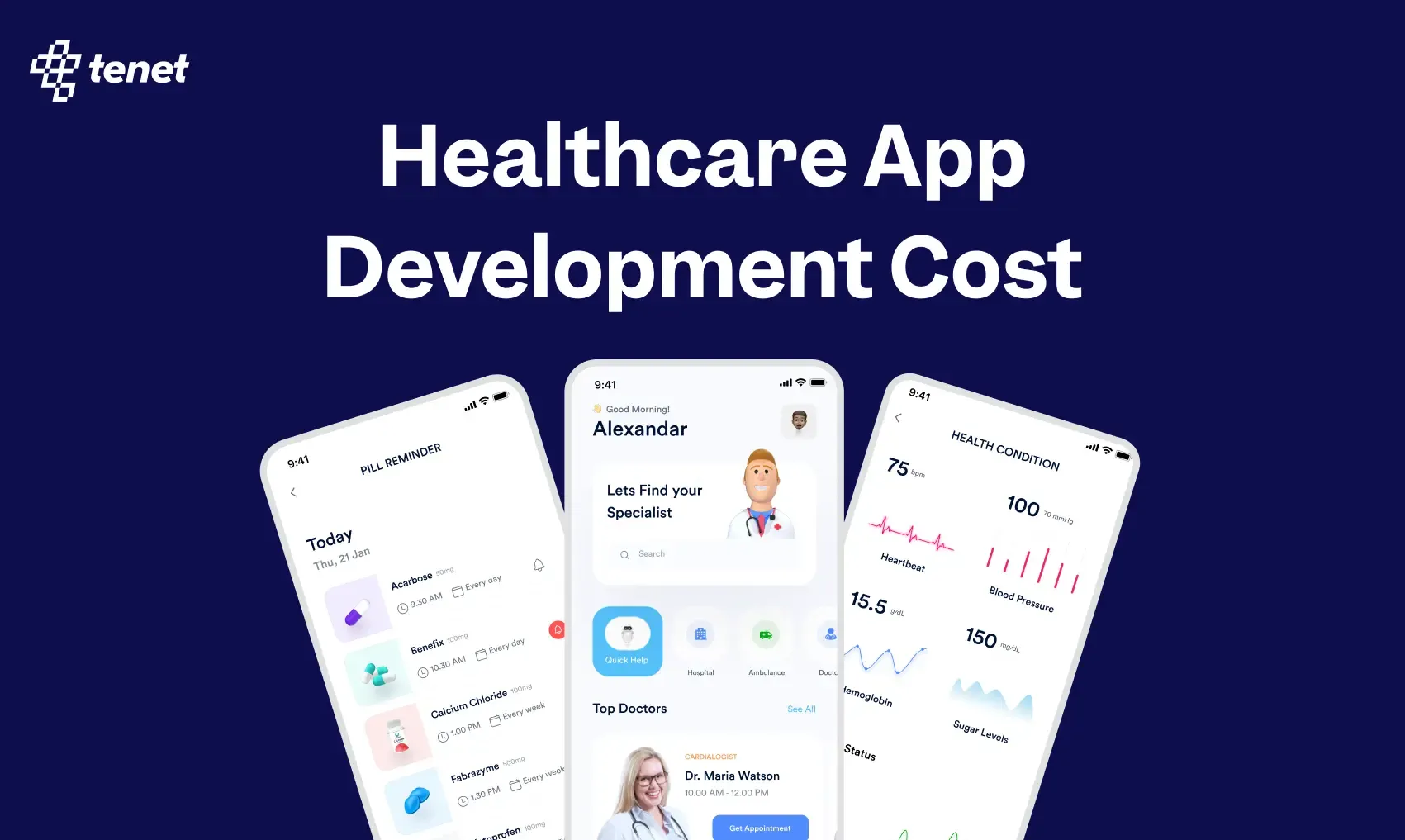
Struggling to estimate how much a telemedicine app will cost in 2025?
With prices ranging from $30,000 to over $300,000, it’s easy to feel overwhelmed by variables like platform choice, compliance needs, and feature complexity.
Skip the confusion—this detailed guide breaks down the real costs of building a healthcare app, explains what drives the price up, and helps you budget smartly.
Whether you're a hospital, clinic, or startup, get the clarity you need before investing.
What is Healthcare app development?
Healthcare app development is the process of building mobile or web applications that enhance the delivery of medical services. These apps connect patients, doctors, and healthcare providers through digital tools that improve access, efficiency, and patient outcomes.
Common types include telemedicine apps for virtual consultations, hospital apps for appointment booking and test results, and wellness apps for tracking fitness or chronic conditions.
For example, a telemedicine app may allow a patient to video call a doctor, receive e-prescriptions, and access past medical records, all from their smartphone.
A hospital app might let users schedule appointments, view lab results, or manage insurance details. Developers focus on creating secure, user-friendly interfaces that comply with healthcare regulations like HIPAA or GDPR.
👉 Here’s how Tenet helps healthcare organizations:
- Healthcare UI UX Design Services
- Healthcare Website Design & Development Company
- Healthcare app development services
What features are included in a telemedicine app?
1. User Registration & Profile Management
Users can sign up using their email address, phone number, or social logins. Profiles include personal details, medical history, allergies, and insurance info. Doctors can also manage their profiles, specialties, and availability. This step sets the foundation for personalized care and secure access.
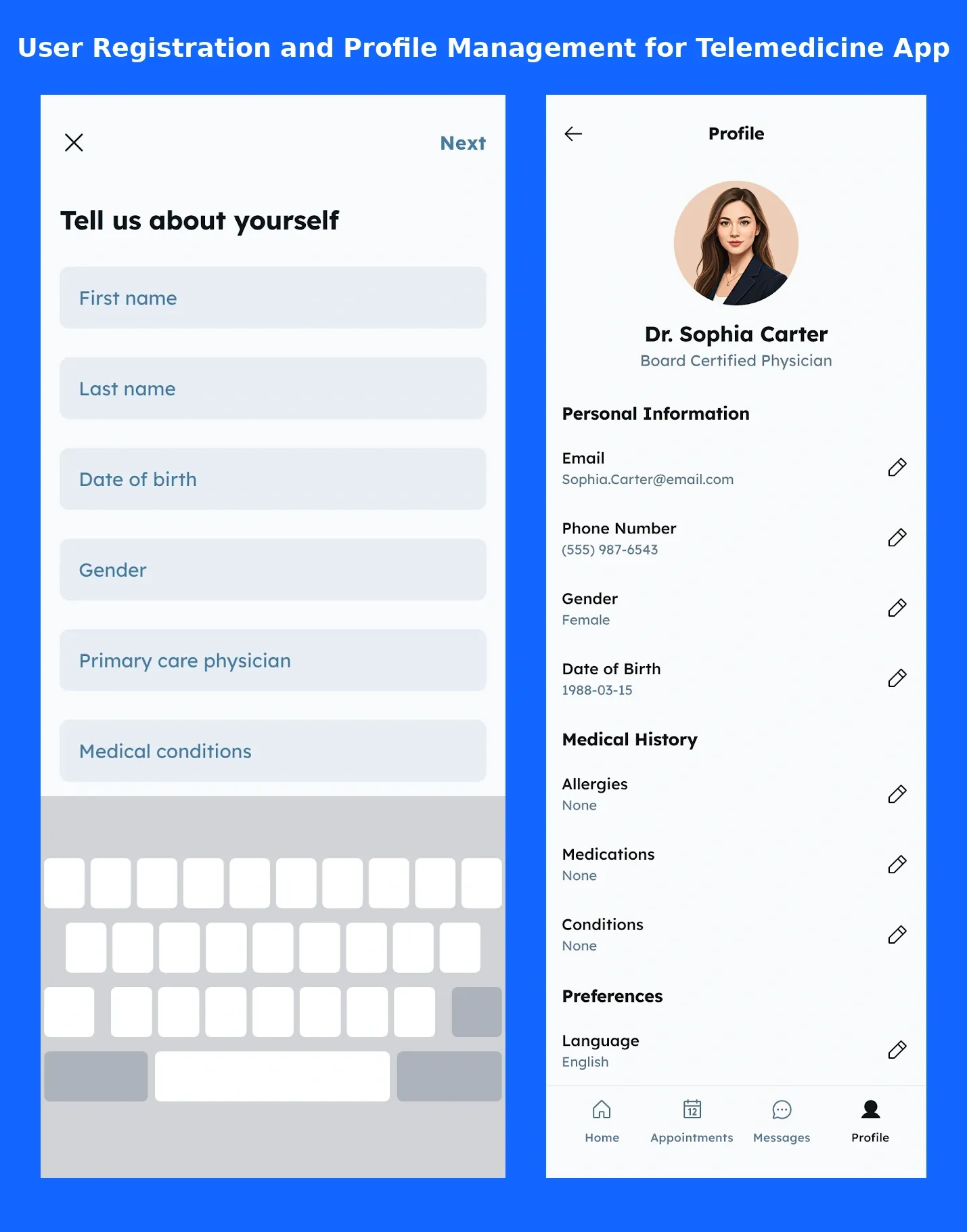
2. Appointment Booking & Scheduling
Patients can browse doctor profiles, check availability, and book appointments directly through the app. Real-time scheduling helps avoid clashes. Doctors receive notifications of new bookings and can manage their calendars accordingly. Reminders and confirmations reduce no-shows.
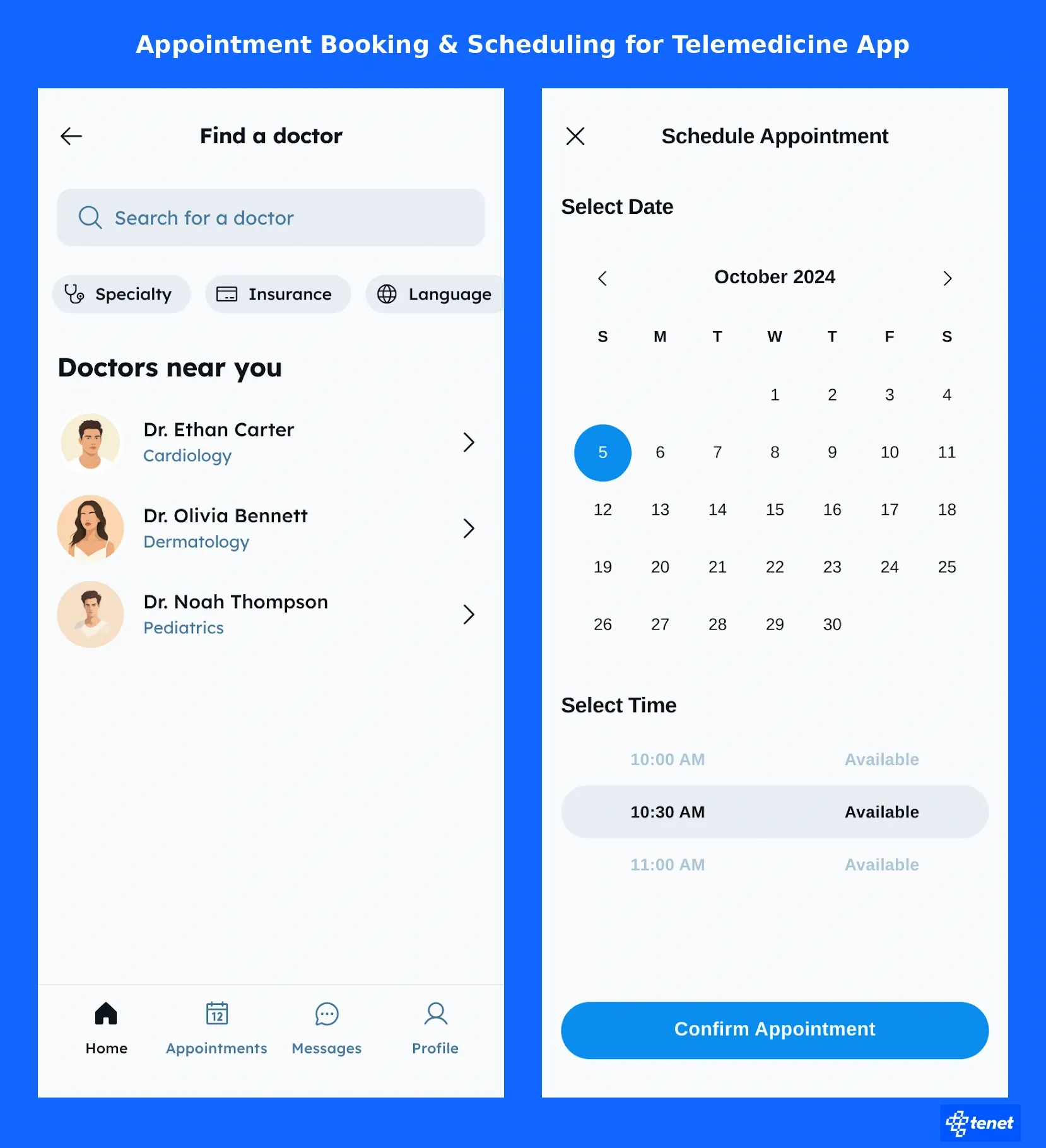
3. Video & Audio Consultations
The core feature of telemedicine is live, secure video or audio calls between patients and doctors. It requires integration with WebRTC or third-party video APIs. HD quality, low latency, and encryption ensure smooth and private interactions.
4. Text-Based Chat & Asynchronous Messaging
Patients can chat with doctors before or after appointments. This feature supports follow-ups, quick questions, and document sharing. Chat history is saved for reference. Asynchronous messaging allows users to receive advice without requiring a live call.
5. Electronic Health Records (EHR) Integration
The app stores or connects to Electronic Health Record (EHR) systems, providing doctors with instant access to patient data. This includes medical history, prescriptions, lab reports, and diagnoses. Seamless EHR integration ensures continuity of care and reduces errors.
6. E-Prescriptions & Medicine Orders
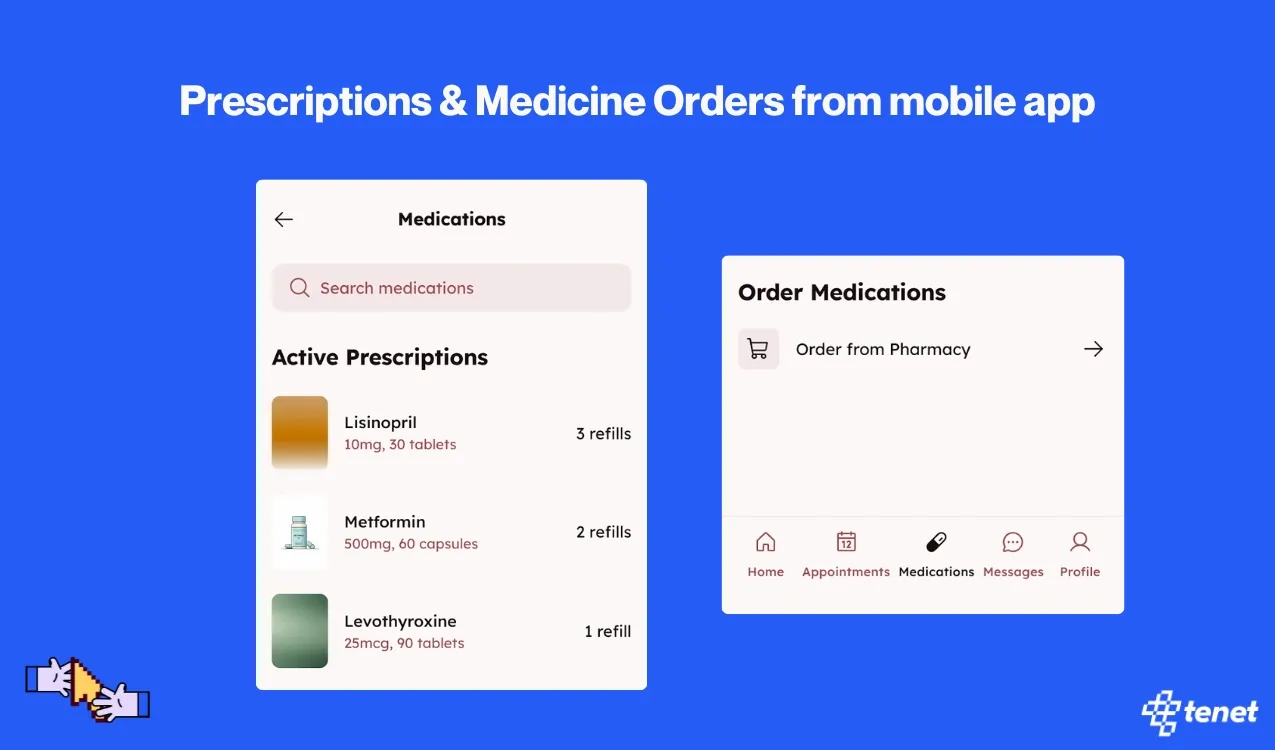
Doctors can issue digital prescriptions after consultations. Patients receive them in-app and can send them to partnered pharmacies or order directly. It streamlines medication access and ensures accurate, tamper-proof prescribing.
7. Payment Gateway Integration
Patients can pay consultation fees securely via credit card, UPI, wallets, or insurance. The app integrates with payment gateways like Stripe, Razorpay, or PayPal. It supports instant billing, invoices, and refund options.
8. Notifications & Reminders
Push notifications inform users about upcoming appointments, messages, prescriptions, or health tips. These alerts keep users engaged and ensure they don’t miss critical updates. Notifications are personalized based on user activity and preferences.
9. Ratings & Reviews
After each consultation, patients can rate and review their doctor. This fosters trust, enables others to make informed choices, and promotes accountability. Admins can moderate reviews to ensure quality and fairness.
10. Admin Dashboard
The backend dashboard allows administrators to manage users, doctors, appointments, payments, and reports. It offers analytics to track app usage, revenue, and system health. The admin panel is key for maintaining control and performance.
11. Data Security & Compliance
Telemedicine apps handle sensitive data, so they must follow HIPAA, GDPR, or local health data laws. Features include end-to-end encryption, secure cloud storage, role-based access, and audit trails to protect patient privacy.
12. AI & ML Integration (Optional Advanced Feature)
Some apps use AI for symptom checking, appointment suggestions, or triaging. Machine learning can also analyze health data trends and automate routine tasks, such as report generation, thereby improving efficiency and personalization.
What factors influence telemedicine app development cost?
1. App Features and Complexity
The number and type of features you include directly impact the development cost. Basic apps with limited functionality, such as appointment booking and patient records, are relatively affordable.
However, if the app includes advanced features like real-time video consultations, secure chat, e-prescriptions, wearable device integration, or multilingual support, the development time and effort increase significantly.
More complex apps require additional backend services, third-party APIs, and extensive testing, which collectively raise the total development budget.
Impact on Cost: Increases cost significantly as complexity grows.
2. Platform Choice (Android, iOS, Web)
The platform you choose, whether Android, iOS, or web, plays a major role in the total development cost. Developing an app for a single platform is more cost-effective than building for multiple platforms simultaneously.
Cross-platform development solutions can reduce some costs, but often compromise on performance or design. Each platform has its own development guidelines, testing procedures, and maintenance requirements.
As a result, supporting more platforms leads to increased development time, effort, and ultimately, higher costs.
Impact on Cost: Increases cost when multiple platforms are supported.
3. UI/UX Design Requirements
User interface and user experience design are crucial for telemedicine apps, particularly since users may range from tech-savvy patients to those with less experience. If you opt for a custom-designed interface with tailored workflows, animations, and accessibility features, the cost increases due to the specialized design effort involved.
On the other hand, using pre-built templates or minimal UI design reduces costs, but may not provide an engaging or intuitive user experience. High-quality UI/UX enhances adoption but comes at a higher price.
Impact on Cost: Increases cost when custom or advanced design is required.
4. Compliance and Data Security
Healthcare apps must comply with strict data protection regulations, such as HIPAA in the United States, GDPR in the European Union, and local privacy laws in other countries. Implementing compliance features such as encrypted data transmission, secure authentication, audit trails, and user consent tracking requires additional development and validation.
These requirements often involve working with legal experts and certified security tools, which increases both development time and cost. However, these measures are essential to avoid legal penalties and ensure user trust.
Impact on Cost: Increases cost due to legal and technical complexity.
5. Backend Infrastructure and Scalability
The backend infrastructure of a telemedicine app determines how well it can handle user load, data storage, real-time updates, and scalability. Apps with minimal backend requirements, such as static scheduling tools, cost less to build.
However, if the app needs to support thousands of concurrent users, store sensitive medical records, or synchronize with multiple systems in real-time, a scalable and secure backend is necessary. This requires experienced engineers and reliable cloud services, which significantly increase the development cost.
Impact on Cost: Increases cost based on user volume and data load.
6. Development Team Location
The geographical location of your development team can lead to considerable differences in project cost. Developers based in North America or Western Europe typically charge higher hourly rates due to the higher cost of living and demand for skilled labour.
In contrast, teams from countries like India, Ukraine, or Vietnam offer competitive pricing with comparable technical expertise. While quality should always be a priority, outsourcing to more affordable regions can help reduce the overall development cost without compromising performance.
Impact on Cost: Can lower or increase cost depending on the region.
7. Integration with Third-Party Services
Most telemedicine apps require integration with third-party services such as payment gateways, electronic health record (EHR) systems, pharmacy APIs, SMS services, or wearable device platforms. Each of these integrations involves additional development, configuration, and testing time.
Some third-party services may also have licensing or usage fees. The more integrations your app requires, the more complex the architecture becomes, leading to an increase in overall development time and cost due to higher coordination and testing efforts.
Impact on Cost: Increases cost with each added integration.
8. Testing and Quality Assurance
Thorough testing is essential in healthcare applications to ensure stability, security, and a flawless user experience.
Quality assurance includes functionality testing, performance testing, security validation, and device compatibility testing. Testing across multiple devices and operating systems helps identify bugs early but requires significant resources.
A robust QA process increases the upfront cost, but it also reduces the risk of user dissatisfaction or regulatory non-compliance after launch. Skimping on testing might lower costs temporarily, but can lead to greater expenses later.
Impact on Cost: Increases initial cost but reduces the risk of future issues.
9. Maintenance and Updates
The initial launch of the app is only the beginning. Ongoing maintenance includes fixing bugs, ensuring compatibility with new operating system versions, updating third-party APIs, and adding new features based on user feedback.
These post-launch activities incur recurring costs, which should be factored into the total project budget. Regular updates improve the app’s performance, security, and user satisfaction over time.
Although maintenance adds to the long-term cost, it is critical for the success and reliability of a healthcare app.
Impact on Cost: Adds recurring costs over the app’s lifecycle.
👉 Read our pricing guides
- How Much Does UI/UX Design Cost?
- Website design cost UK: How much does a website cost in UK?
- App development cost in UK
- PPC Management Pricing: How Much Does PPC Management Cost?
- How much do design audit services cost?
Telemedicine App Development Cost by Region
Why Does the Cost of Telemedicine App Development Change by Location?
Building the same telemedicine app in India versus the US can cost three to four times more, and it’s not just about salary differences. Here's why:
- Developer Rates Vary Widely
In places like India, skilled developers typically charge between $20 and $40 per hour. However, in the US or Canada, it can cost between $100 and $200 per hour. That alone makes a huge difference in your total budget.
- Local Rules & Red Tape
Western countries often have strict healthcare regulations and higher operational costs. From taxes to insurance to certifications, these extras add up.
- Experience in Healthcare Tech
Some regions (like Germany or the UK) have more developers experienced in building secure, compliant health apps. Their rates may be higher, but you’re also paying for specialized know-how.
- Time Zone and Communication Smoothness
Teams in similar time zones or with stronger English skills may charge a premium, but it often pays off with faster project cycles and fewer misunderstandings.
- Data Privacy & Security Laws
Places like the EU (with GDPR) or the UAE (with local data laws) require stricter handling of patient data. That means extra time spent on compliance costs more.
Telemedicine App Development Cost by Region (2025 Estimates)
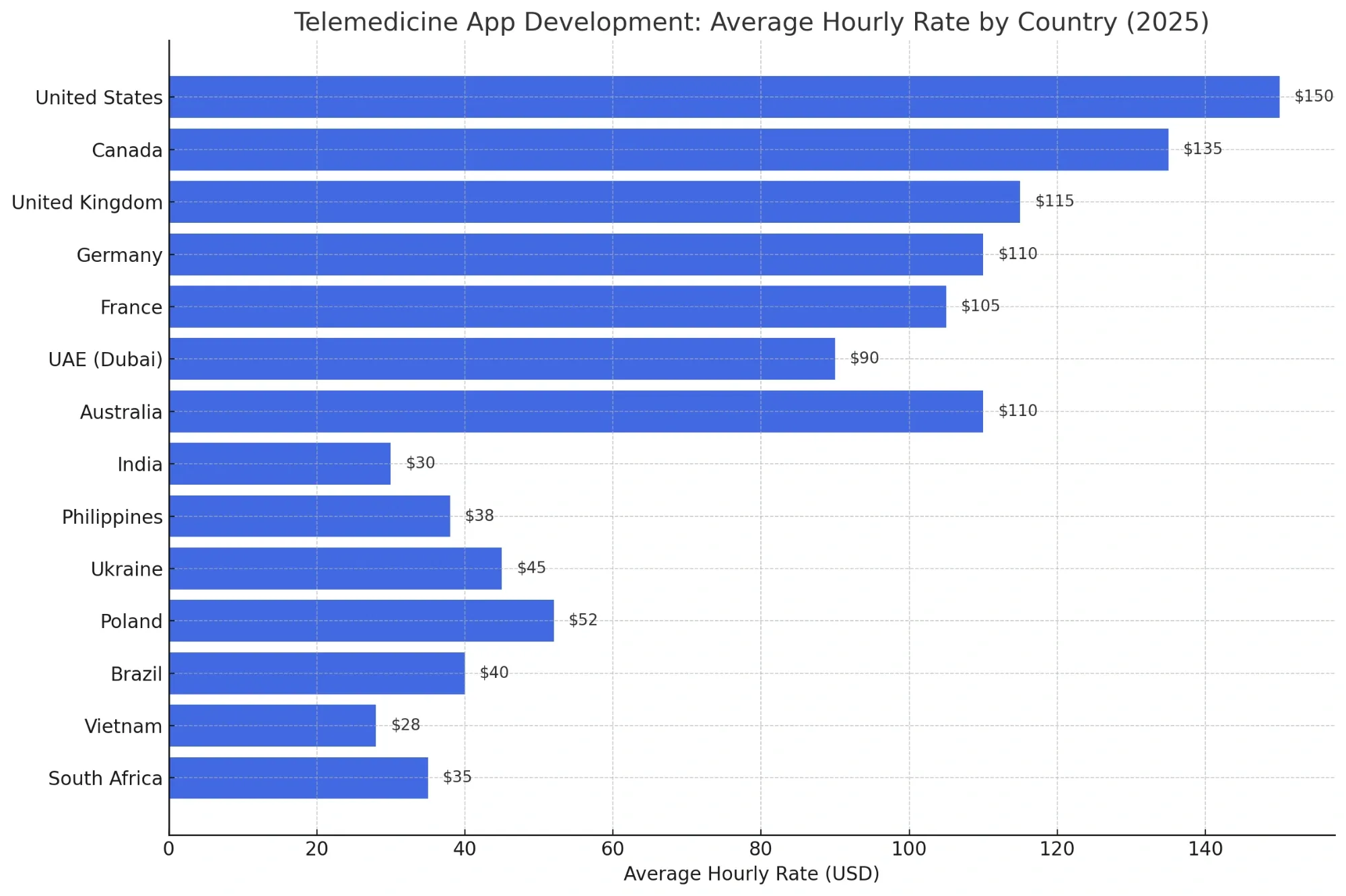
How much does it cost to build a healthcare android app?
To build a healthcare Android app, the average cost ranges from $25,000 to $150,000. It depends on features like appointment booking, EHR integration, and HIPAA compliance. The costs also vary by location, tech stack, and testing requirements.
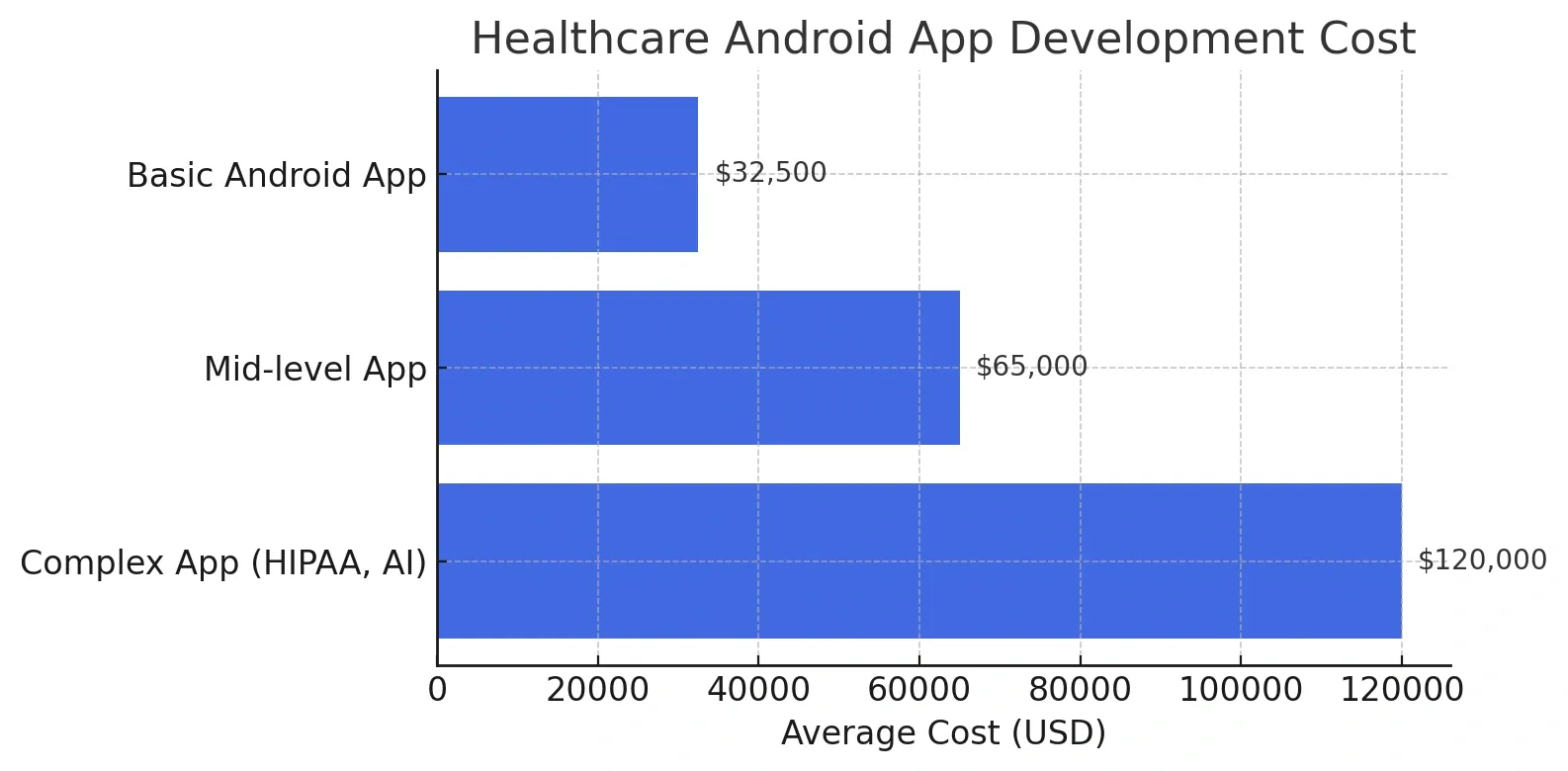
How much does it cost to build a healthcare iOS app?
To build a healthcare iOS app, the cost ranges from $30,000 to $160,000. The price depends on app complexity, integrations, design polish, and compliance with Apple’s strict guidelines for health apps.
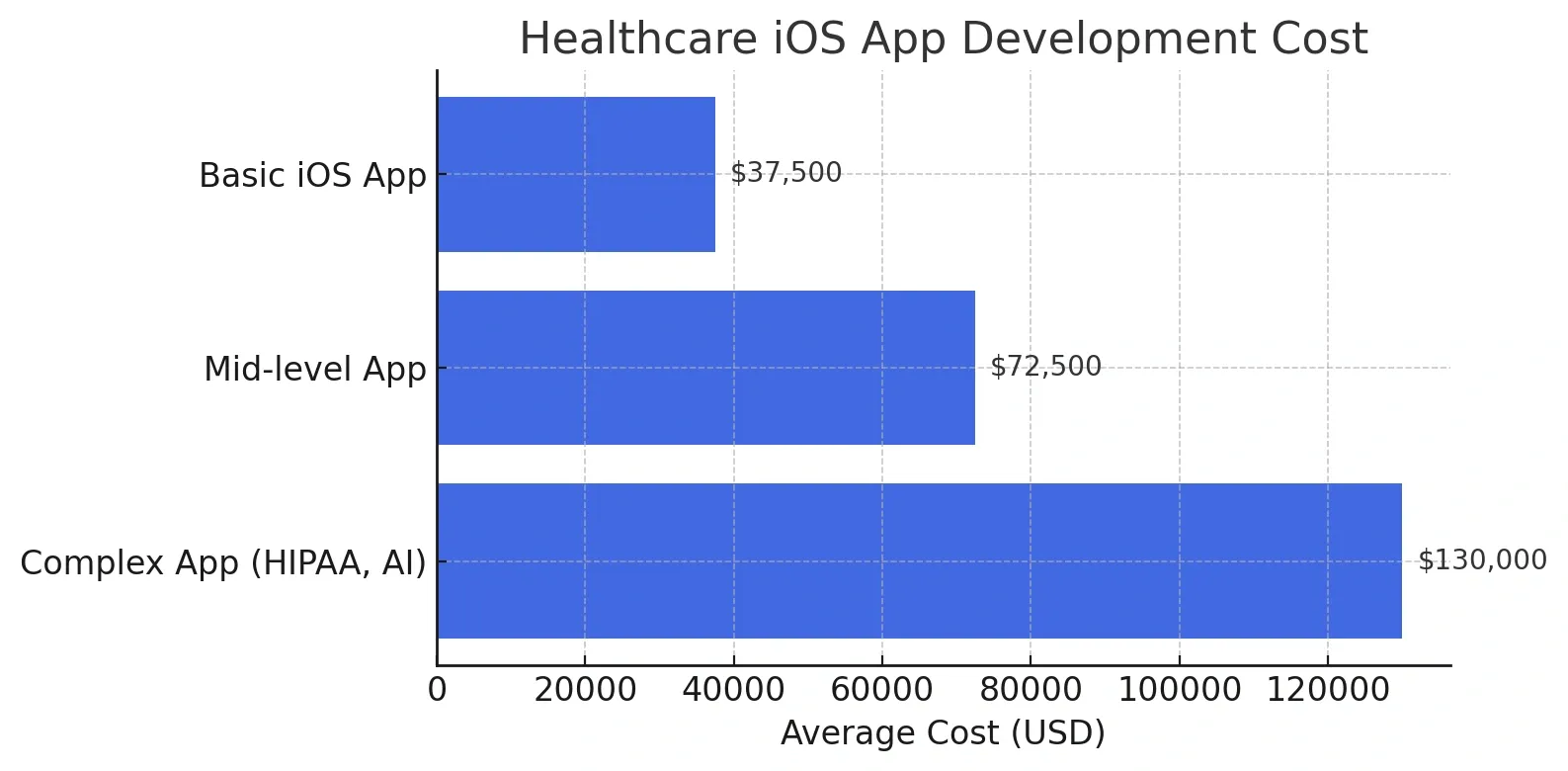
How much does it cost to build a healthcare desktop app?
Building a healthcare desktop app can cost anywhere from $40,000 to $ 200,000 or more. It depends on the platform (Windows or macOS), offline capabilities, user roles, and integration with hospital systems or APIs.
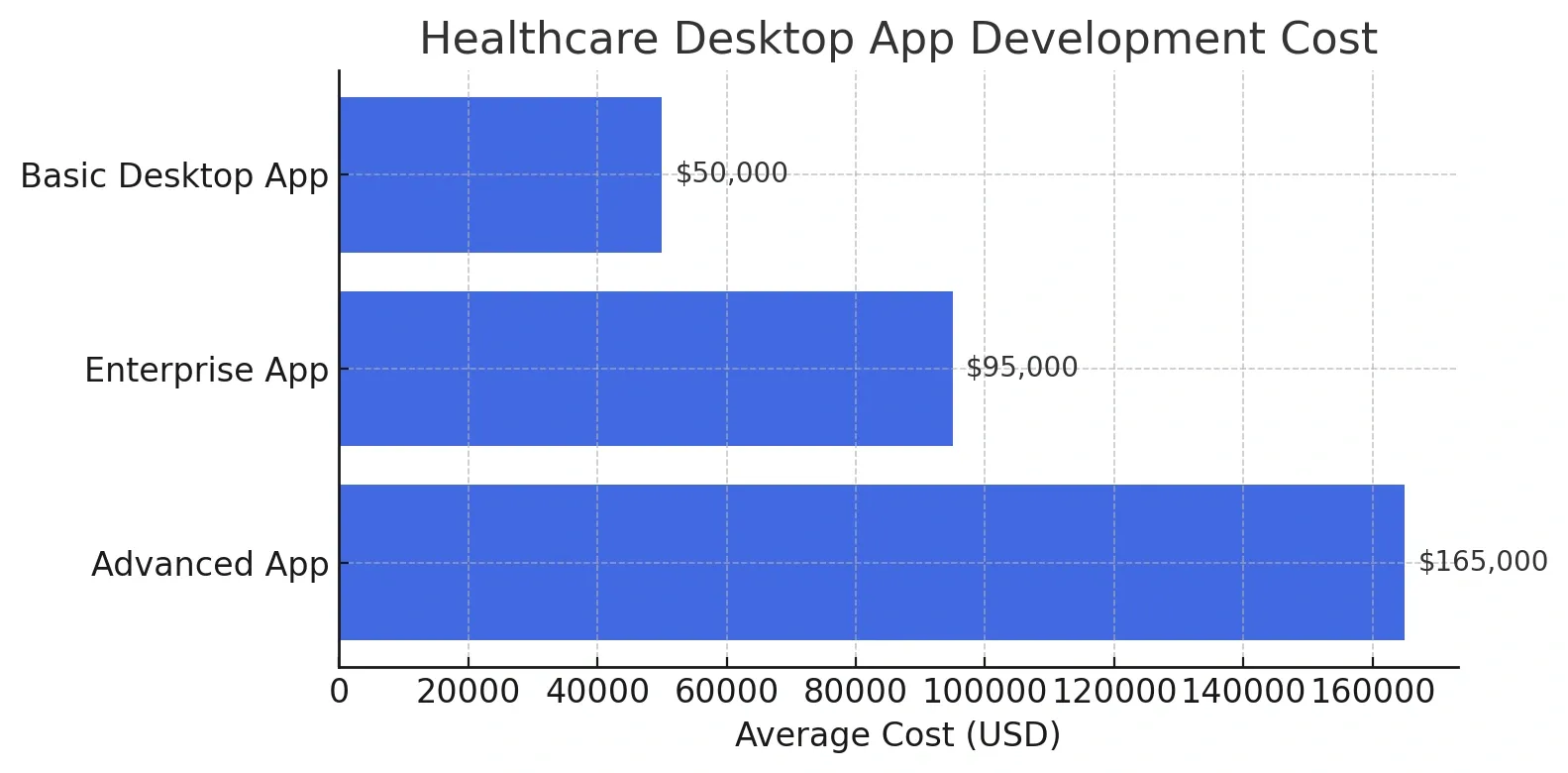
👉 Read our pricing guides
- Website development cost in Dubai
- How Much Does Branding Cost?
- How much does iOS App Development Cost?
- SaaS Development Costs: How Much to Build a SaaS Platform?
- Mobile App Development Cost: Factors and Cost Estimates
- How Much Does Digital Product Design Cost?
Why Top healthcare brands hire Tenet for app development
Leading healthcare brands trust Tenet because we deliver secure, high-performance mobile apps tailored to their specific needs, including those with complex medical requirements. With over 450 solutions delivered across multiple industries and more than 20 million users impacted, our team brings proven expertise in HIPAA compliance, intuitive UX, and scalable integrations.
Backed by a 98% client satisfaction rate, Tenet is the preferred mobile app development company for healthcare organizations that value reliability, security, and user-centric design.
👉 Contact us for a free project proposal.
FAQs
How much does it cost to develop a telemedicine app in 2025?
In 2025, developing a telemedicine app costs between $30,000 and $300,000. The total depends on features, platforms, data security, compliance, and development location. US-based apps cost $120,000–$300,000, while Indian developers can build similar apps for $30,000–$80,000.
What features impact the cost of a healthcare app?
The cost of a healthcare app increases with features like real-time video consultations, EHR integration, secure messaging, e-prescriptions, and AI tools. The more complex the app, the higher the cost due to backend services, security, testing, and third-party APIs.
Is it more expensive to build a hospital app for iOS, Android, or both?
Building a hospital app for both iOS and Android is more expensive than targeting one platform. Cross-platform apps cost less than separate native apps, but native apps deliver better performance. Supporting both increases development time, testing, and compliance costs.
How long does it take to build a fully functional telemedicine app?
Developing a fully functional telemedicine app takes 3 to 9 months. Timeline depends on app complexity, compliance needs, features like video calls and EHR, and the size of the development team. Faster delivery is possible with experienced teams and agile development.
What’s the difference in cost between native and cross-platform healthcare apps?
The main difference in cost between native and cross-platform healthcare apps is that native apps cost more due to separate codebases for iOS and Android. Cross-platform apps are cheaper but may compromise on performance, user experience, and platform-specific features.
Are there ongoing costs after launching a healthcare app?
Yes, healthcare apps incur ongoing costs after launch. These include maintenance, bug fixes, security updates, compliance adjustments, server hosting, and feature upgrades. Monthly or annual costs vary but are essential for keeping the app reliable and legally compliant.
Can I integrate my existing hospital systems into the app?
Yes, existing hospital systems can be integrated into a healthcare app using APIs. Common integrations include EHR systems, billing software, pharmacy platforms, and appointment tools. Custom development ensures secure data sync and compliance with healthcare regulations.
Learn how our developers can help you in healthcare app development
Learn how our developers can help you in healthcare app development

Got an idea on your mind?
We’d love to hear about your brand, your visions, current challenges, even if you’re not sure what your next step is.
Let’s talk
